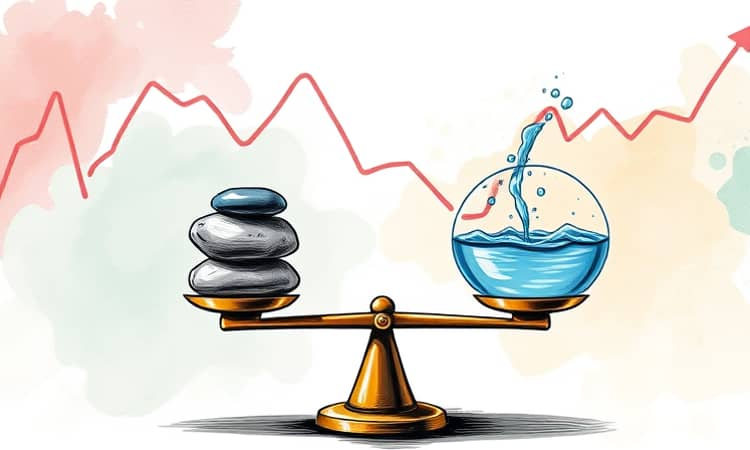Interest rates shape the cost of borrowing, influencing everything from monthly budget planning to long-term financial stability. Choosing between fixed and variable rates is one of the most critical decisions for any borrower. This guide will equip you with in-depth knowledge to make an informed, confident choice.
Definitions and Mechanisms
Fixed interest rates remain unchanged over the entire life of a loan, offering consistent monthly payments for budgeting. When you sign your loan agreement, you lock in a single rate. This means that regardless of economic shifts—whether central banks raise or lower rates—your rate and payment schedule stay the same.
Variable interest rates, in contrast, change periodically based on a reference index such as the prime rate or LIBOR. These adjustments are often scheduled—monthly, quarterly, or annually—and may be governed by caps that limit how much a rate can rise or fall. While this structure can deliver potential savings in a falling rate environment, it also subjects borrowers to increasing costs if the market moves upward.
Understanding the underlying mechanism is crucial: lenders calculate the variable rate by adding a margin (often called the spread) to the chosen index. Over time, your effective rate may diverge significantly from its initial value, making it essential to track both the base index and overall economic indicators.
Typical Applications
Lenders tailor rate structures to different loan products based on risk, borrower profiles, and market practices. The table below illustrates common pairings between rate types and loan products.
Fixed rates dominate long-term financing like mortgages and auto loans because predictability is highly valued over many years. Variable rates are common in shorter-term or revolving credit, where lenders pass market fluctuations onto borrowers more frequently, managing their own risk exposure.
Pros and Cons
- Fixed rate pros: Predictable budgets, protection against rate hikes, and simplified financial planning with no surprises when markets shift.
- Fixed rate cons: Higher starting rates compared to variables and missed opportunities to benefit from declining interest rate environments.
- Variable rate pros: Lower initial rates, potential savings in the short term, and the possibility of paying less if economic conditions soften.
- Variable rate cons: Payment volatility can strain household budgets, uncertainty in long-term planning, and greater exposure to sudden market swings.
When evaluating pros and cons, consider the time horizon of your loan and your personal risk tolerance. A short-term borrower with flexible finances may lean toward variable rates, while someone seeking stability over decades often finds fixed rates more appealing.
Major Differences
The most striking contrast is stability versus flexibility in payments. Fixed rates guarantee that your monthly obligation remains constant, eliminating guesswork in your budget. Variable rates introduce uncertainty with periodic adjustments linked to market indices, creating either cost savings or additional expenses.
Another key divergence is initial cost versus long-term risk. Variable loans typically start lower, offering immediate relief for cash-strapped borrowers. Yet they carry the risk that rates may climb above fixed rate benchmarks, potentially leading to payments that outpace those of a fixed-rate comparator. Caps on variable rates can mitigate extreme spikes but cannot eliminate all risk.
Assessing Suitability
- Borrowers prioritizing predictable monthly budgets and those with tight cash flow often favor fixed rates for their unwavering payment schedule.
- Those comfortable with market risk, who plan to repay quickly, or who anticipate falling rates might opt for variable rates to capitalize on potential market dips.
- In rising-rate environments, fixed rates provide a hedge against escalating borrowing costs, delivering insurance against future rate hikes.
- When economic forecasts predict stable or declining rates, variable products can offer enhanced cost efficiency if conditions align with projections.
Financial advisors recommend matching loan type to your repayment timeline and risk appetite. A clear repayment strategy reduces exposure to unexpected increases in variable-rate scenarios.
Example Scenarios and Trends
Historical data shows that Federal Reserve policy has a direct impact on variable rates. During economic downturns, rate cuts can lower monthly payments for borrowers with variable loans, sometimes dropping by half a percentage point or more over a year. Conversely, rapid inflationary pressures can lead to substantial hikes, outpacing initial fixed-rate offers.
Consider a 30-year mortgage: a fixed rate might be 7.0%, while a variable option begins at 5.5%. If the benchmark rate rises by 2% over five years, that variable rate becomes 7.5%, eclipsing the fixed rate both in cost and monthly payment.
Market spreads between fixed and variable rates vary by lender and economic outlook. At times, the gap may be as narrow as 0.2%, while in volatile periods it can expand to over 1%. Understanding these dynamics can help you negotiate better terms or decide on refinancing when opportunities arise.
Key Decision Factors
- Loan duration: Longer loans magnify the impact of rate changes. Fixed rates tend to be safer for 10-year-plus mortgages or student loans.
- Interest rate outlook: If your analysis or professional forecasts predict rising rates, fixed provides a secure rate lock.
- Financial stability: Those with steady incomes and emergency savings can tolerate variable-rate fluctuations more easily than those living paycheck to paycheck.
Reviewing economic indicators—such as inflation data, central bank minutes, and yield curves—can inform your decision. Engaging a financial planner or using online calculators to simulate rate changes helps quantify potential outcomes.
Questions to Ask Before Choosing
Ensure you understand the adjustment period for a variable rate: will it change monthly, quarterly, or annually? Ask about rate caps, both periodic and lifetime, so you know your maximum exposure.
With fixed loans, inquire whether there are prepayment penalties or refinancing fees, which can affect your ability to switch if rates become more favorable.
Always request an amortization schedule reflecting different rate change scenarios. This provides a visual overview of how principal and interest portions of your payment shift over time.
Conclusion
Whether you choose fixed or variable interest rates should align with your financial goals, risk tolerance, and the broader economic environment. While fixed rates deliver peace of mind and stable payments, variable rates offer flexibility and potential savings in favorable markets.
By carefully weighing the advantages and disadvantages, analyzing market trends, and asking the right questions, you can select a loan structure that empowers you on your path to financial success. Armed with this knowledge, you’re ready to make a decision that supports both your budget and your long-term aspirations.














